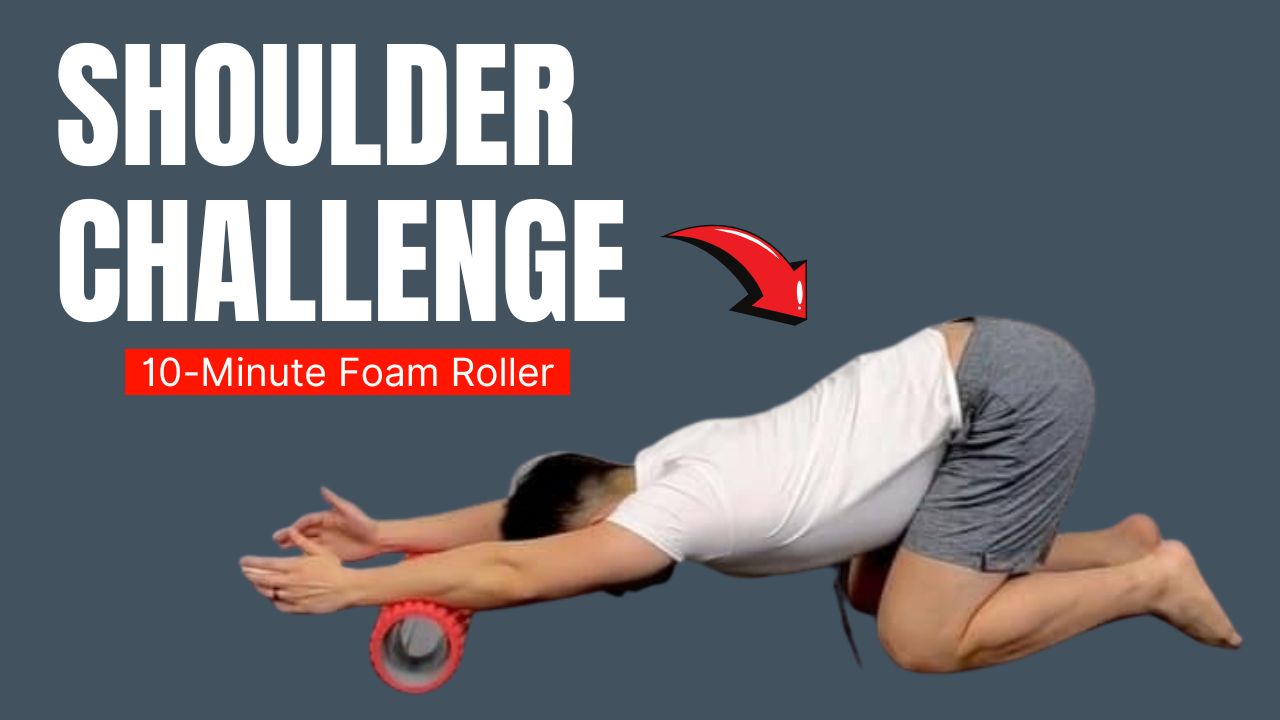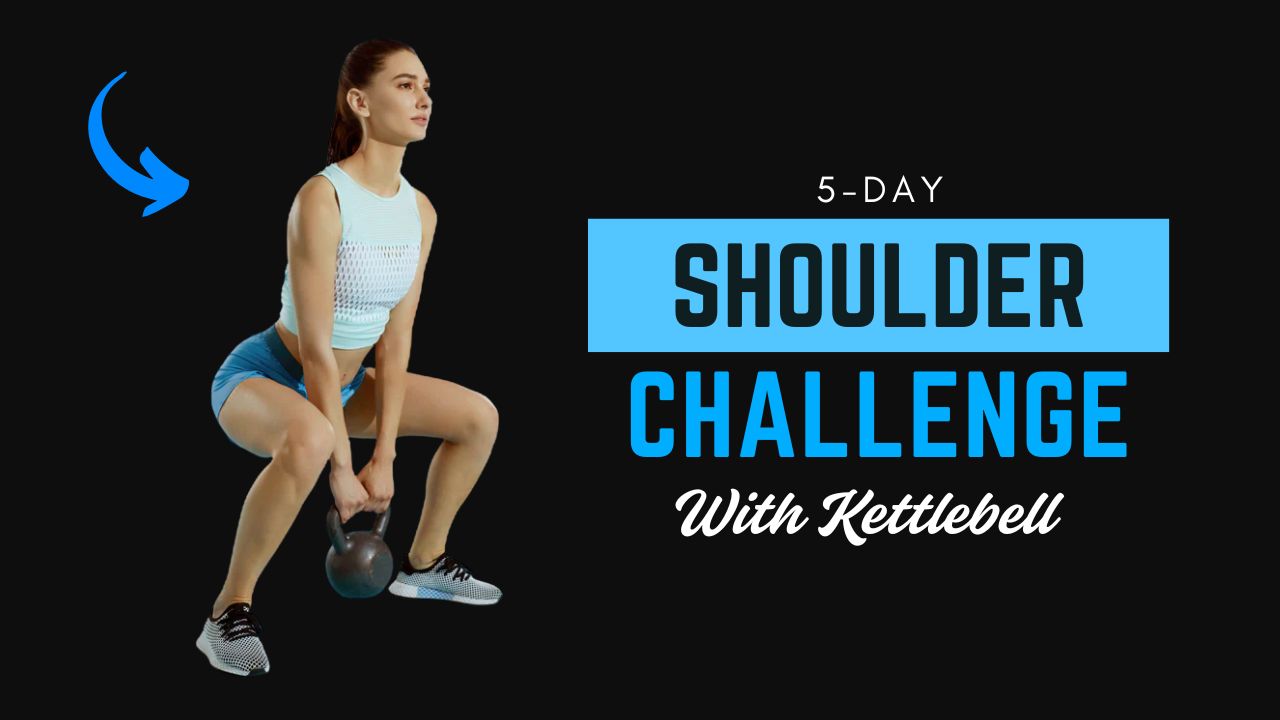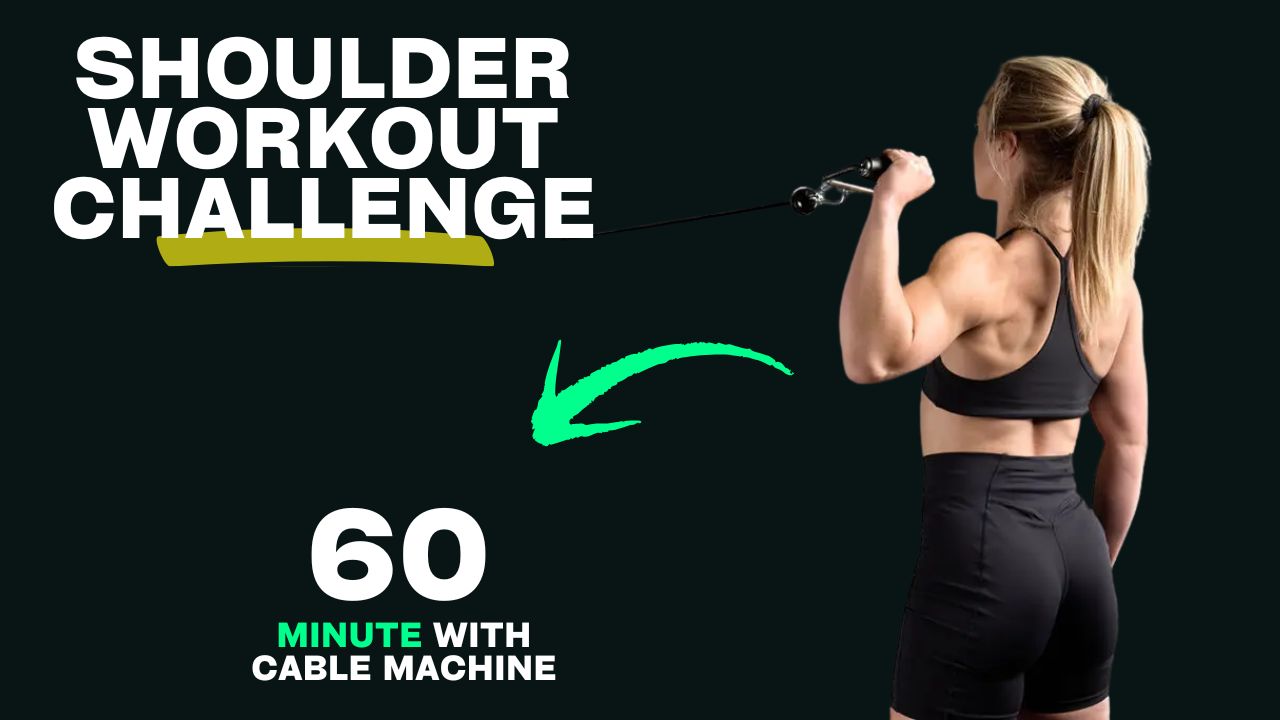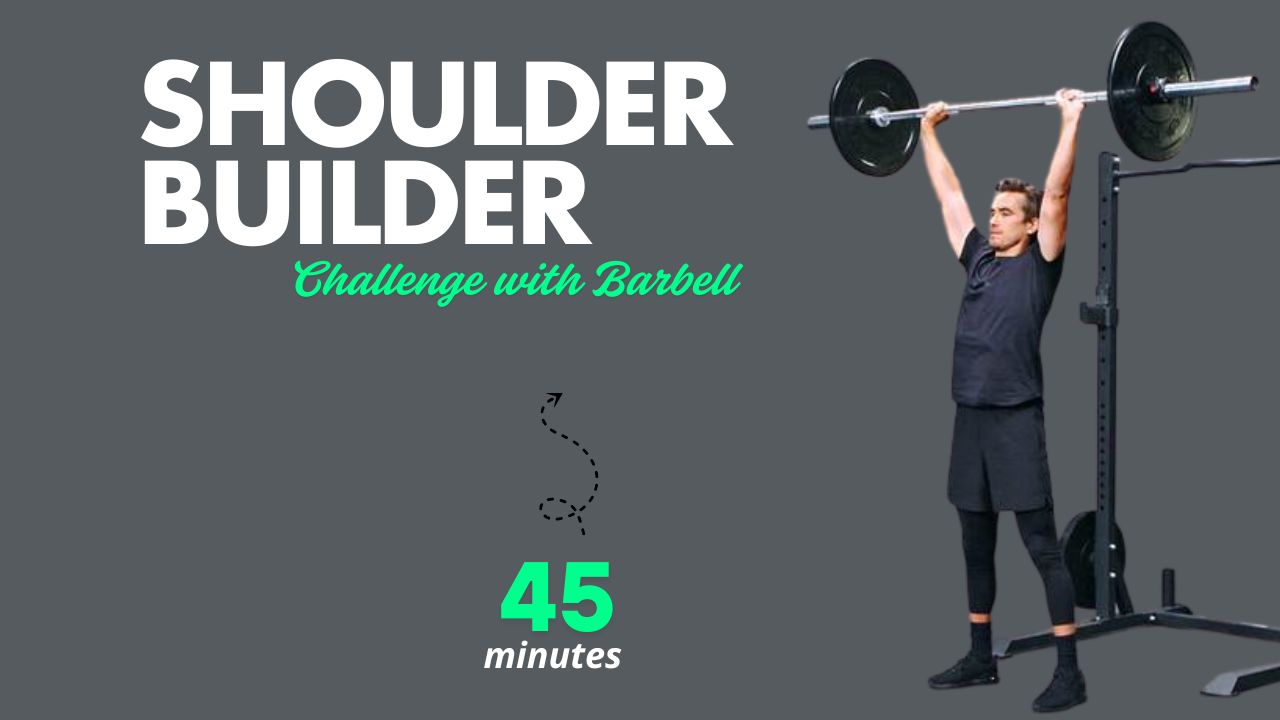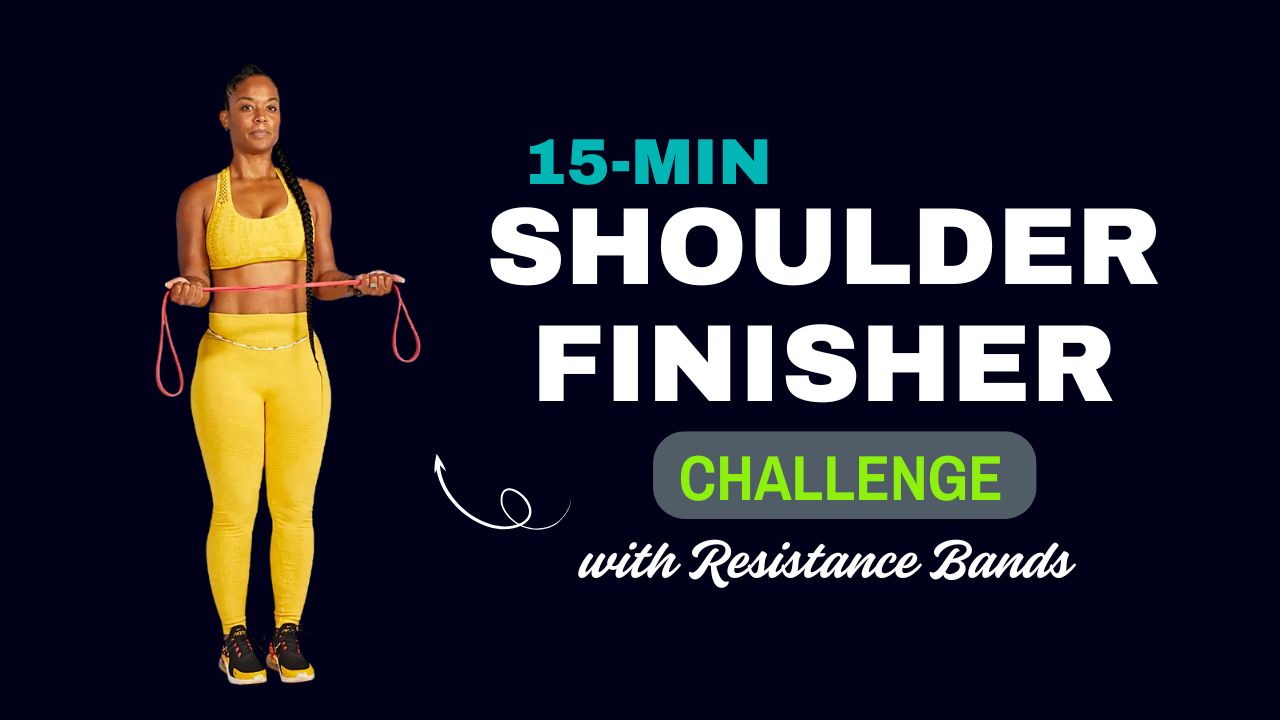Shoulders aren’t just for looks — they’re your body’s power hubs. Whether you’re pressing a heavy box overhead, swinging a tennis racket, or holding a yoga pose, your deltoids and supporting muscles work silently in the background. Yet, most people still overlook the cable machine when training their shoulders.
Why cables? Unlike dumbbells or barbells, cable machines maintain constant tension throughout each rep, targeting both your concentric (lifting) and eccentric (lowering) phases.
This means better muscle activation, increased time under tension, and ultimately more strength and definition.
This 60-minute cable machine shoulder workout challenge is designed to hit all three heads of your deltoids (front, side, and rear) plus the traps and stabilizers, giving you not only broader, more defined shoulders but also stronger, more functional joints.
Myth Busted: Many believe that cable machines are “only for beginners.” In reality, elite athletes use them to fine-tune strength, control, and stability — often after heavy free-weight work.

Table of Contents
Benefits of Cable Machine Shoulder Workouts
Before we dive into the exercises, here’s why this approach works:
- Constant Muscle Engagement – No “dead spots” in your range of motion.
- Joint-Friendly – Smoother resistance curve reduces stress on your shoulder joints.
- Versatility – Adjust the height, angle, and handle type for endless variations.
- Perfect for Isolation – Target specific parts of the shoulder with precision.
What Can Happen After 30 Days of the 60-Minute Cable Machine Shoulder Workout
| Positive Changes | Why It Happens |
|---|---|
| Improved shoulder strength and endurance | Consistent tension from cables builds both power and muscular stamina. |
| Noticeable increase in shoulder muscle tone and definition | Targeting all three deltoid heads evenly promotes balanced growth. |
| Better posture and upper body alignment | Strengthening rear delts and traps counteracts rounded shoulders. |
| Enhanced stability in overhead and pushing movements | Cable work engages stabilizing muscles through controlled resistance. |
| Reduced joint strain compared to heavy free weights | Cables allow smoother movement patterns, lowering stress on shoulder joints. |
| Increased mind–muscle connection | Focused isolation work teaches you to engage the right muscles more effectively. |
Do’s and Don’ts for the 60-Minute Cable Machine Shoulder Workout
| Do’s | Don’ts |
|---|---|
| Warm up with 5–7 minutes of dynamic stretches before starting. | Skip your warm-up — this increases injury risk. |
| Use a controlled tempo (about 2 seconds lifting, 3 seconds lowering). | Swing or jerk the weights for momentum. |
| Keep your core tight and posture upright during all exercises. | Lean excessively or arch your lower back during presses. |
| Start with a manageable weight and progress gradually. | Go too heavy too soon, sacrificing form. |
| Focus on full range of motion for each movement. | Cut reps short or use partial range unnecessarily. |
| Train all three heads of the deltoid (front, side, rear) for balance. | Only train front delts, leading to muscle imbalance. |
| Rest 45–60 seconds between sets for optimal recovery. | Rest too long or too short, reducing workout effectiveness. |
| Maintain neutral wrist and elbow alignment to protect joints. | Let wrists bend awkwardly or elbows flare excessively. |
| Engage your mind–muscle connection for better results. | Rush through reps without focusing on the muscle. |
The Exercises & How to Do Them
Below are the seven powerhouse exercises that make up this 60-minute challenge. Each one is explained with its purpose and step-by-step “How to” instructions.
1. Cable Overhead Press
Purpose: Builds raw pressing power, targets front and side deltoids, and engages triceps.
How to:
- Attach a straight bar or rope to a low pulley.
- Stand with feet shoulder-width apart, gripping the bar/rope with palms facing forward.
- Bring the handle to shoulder level, elbows bent.
- Press the weight upward until arms are fully extended without locking elbows.
- Lower back slowly to the starting position.
Tip: Keep your core tight — avoid leaning backward, which can strain your lower back.
2. Single-Arm Cable Lateral Raise
Purpose: Adds width to your shoulders by isolating the lateral (middle) deltoid.
How to:
- Attach a D-handle to the low pulley.
- Stand sideways to the machine, handle in the hand farthest from it.
- With a slight bend in your elbow, raise your arm out to the side until shoulder height.
- Pause briefly, then lower slowly.
- Complete all reps on one side before switching.
Did You Know? Lateral raises are more effective when done slightly in front of your body rather than directly to the side — this aligns with your shoulder joint’s natural plane of motion.
3. Cable Front Raise
Purpose: Targets the anterior deltoid for that rounded shoulder look.
How to:
- Attach a straight bar or rope to the low pulley.
- Stand facing away from the machine, gripping the attachment with both hands.
- With elbows slightly bent, lift the bar straight in front of you to shoulder height.
- Lower slowly without letting the weight stack rest.
Tip: Avoid swinging — control the movement for maximum muscle recruitment.
4. Cable Rear Delt Fly
Purpose: Strengthens the often-neglected rear delts, improving posture and shoulder balance.
How to:
- Set the pulleys at upper chest height and attach D-handles.
- Cross your arms to grab the opposite handle (right hand on left cable, left hand on right cable).
- With elbows slightly bent, pull the handles outward and backward in an arc.
- Squeeze your shoulder blades together, then return slowly.
Myth Busted: Rear delt training isn’t just for aesthetics — it also helps prevent rotator cuff injuries.
5. Cable Upright Row
Purpose: Works the traps and lateral delts for fuller, more powerful shoulders.
How to:
- Attach a straight bar to the low pulley.
- Stand with feet hip-width apart, gripping the bar with palms facing your body.
- Pull the bar upward along your torso until elbows are at shoulder height.
- Lower under control to starting position.
Tip: Keep elbows higher than wrists to avoid shoulder impingement.
6. Face Pull (with Rope Attachment)
Purpose: Improves rear delt and upper back strength while boosting shoulder health.
How to:
- Set the pulley to upper chest height and attach a rope.
- Grip the rope with both hands, palms facing inward.
- Pull the rope toward your face, separating your hands as you pull.
- Squeeze your shoulder blades at the end, then return slowly.
Did You Know? Face pulls are one of the best corrective exercises for people who sit at desks all day — they counteract rounded shoulder posture.
7. Cable Arnold Press
Purpose: A twist on the classic press that targets all three heads of the deltoid.
How to:
- Attach D-handles to low pulleys.
- Start with palms facing toward you, handles at chest height.
- As you press upward, rotate your wrists so palms face forward at the top.
- Reverse the motion on the way down.
Tip: This movement keeps constant tension on the shoulders, unlike the dumbbell version where tension drops at the bottom.
Common Mistakes to Avoid
- Going Too Heavy – Prioritize control over ego lifting.
- Poor Range of Motion – Short, jerky reps reduce effectiveness.
- Neglecting Rear Delts – Leads to muscular imbalance and injury risk.
- Shrugging Shoulders During Lateral Raises – This shifts tension away from the delts.
Safety & Performance Tips
- Warm up with 5–7 minutes of dynamic shoulder mobility drills before starting.
- Keep movements controlled — aim for 2 seconds up, 3 seconds down for each rep.
- Maintain neutral wrist alignment to avoid unnecessary strain.
- Breathe naturally: exhale on exertion, inhale on return.
The 60-Minute Cable Shoulder Workout Challenge
Here’s your complete training plan. This structure ensures you hit all angles of the shoulder while keeping intensity high.
Row Format (Step-by-Step Flow)
- Cable Overhead Press – 4 sets × 10–12 reps
- Single-Arm Cable Lateral Raise – 3 sets × 12–15 reps per arm
- Cable Front Raise – 3 sets × 12–15 reps
- Cable Rear Delt Fly – 4 sets × 12–15 reps
- Cable Upright Row – 3 sets × 10–12 reps
- Face Pull – 4 sets × 12–15 reps
- Cable Arnold Press – 3 sets × 10–12 reps
Rest: 45–60 seconds between sets.
Total Duration: ~60 minutes.
Table Format
| Exercise | Sets | Reps | Rest Time |
|---|---|---|---|
| Cable Overhead Press | 4 | 10–12 | 60 sec |
| Single-Arm Cable Lateral Raise | 3 | 12–15/arm | 45 sec |
| Cable Front Raise | 3 | 12–15 | 45 sec |
| Cable Rear Delt Fly | 4 | 12–15 | 60 sec |
| Cable Upright Row | 3 | 10–12 | 45 sec |
| Face Pull | 4 | 12–15 | 45 sec |
| Cable Arnold Press | 3 | 10–12 | 60 sec |
Final Thoughts
The cable machine is more than just an accessory tool — it can be the centerpiece of a powerful shoulder workout. This 60-minute challenge doesn’t just build muscle; it improves shoulder health, posture, and functional strength.
Consistency is key — perform this workout 1–2 times per week, pairing it with a balanced push–pull–legs or upper/lower split, and you’ll see noticeable definition and strength gains within weeks.
Did You Know? Studies show that constant-tension training methods (like cables) can lead to up to 40% more hypertrophy in targeted muscles compared to free weights alone, thanks to extended time under tension.
Frequently Asked Questions (FAQs)
Can I build big shoulders using only a cable machine?
Yes. The cable machine can effectively build muscle mass in your shoulders by keeping constant tension on the muscles throughout the movement. While free weights are also great, cables allow for more controlled isolation work and can be just as effective when paired with progressive overload.
How often should I do this 60-minute shoulder workout?
For most people, once or twice per week is ideal. This allows enough recovery time while still providing consistent stimulus for growth. Avoid training shoulders on consecutive days.
Is this workout suitable for beginners?
Yes, but beginners should start with lighter weights and fewer sets (about 2 per exercise) to learn proper form before increasing volume.
What weight should I start with on the cable machine?
Choose a weight that allows you to complete all reps with good form but still feels challenging on the last 2–3 reps of each set. If your form starts to break, reduce the weight.
Can I replace dumbbell shoulder workouts with this routine?
You can, especially if you want to reduce joint strain or target your muscles more precisely. Many lifters alternate between cable and dumbbell sessions to get the benefits of both.
How long will it take to see results?
With proper nutrition, rest, and consistency, most people start noticing strength improvements in 2–4 weeks and visible definition changes within 6–8 weeks.
Can this workout help with shoulder injuries or pain?
If you have existing shoulder pain or injury, consult a physiotherapist or sports medicine doctor before starting. Cable exercises are generally easier on the joints, but you must use correct form and avoid heavy loads until cleared.
Should I do this workout before or after chest day?
Ideally, leave at least 48 hours between intense chest and shoulder workouts since both muscle groups share pressing movements and can affect recovery.
Do I need any attachments for the cable machine?
Yes. For the exercises in this routine, you’ll need a straight bar, D-handles, and a rope attachment. Most gyms have these readily available.
Will this workout also train my traps and upper back?
Yes. Exercises like the upright row, face pull, and rear delt fly will also target your traps, rhomboids, and other upper-back muscles.


